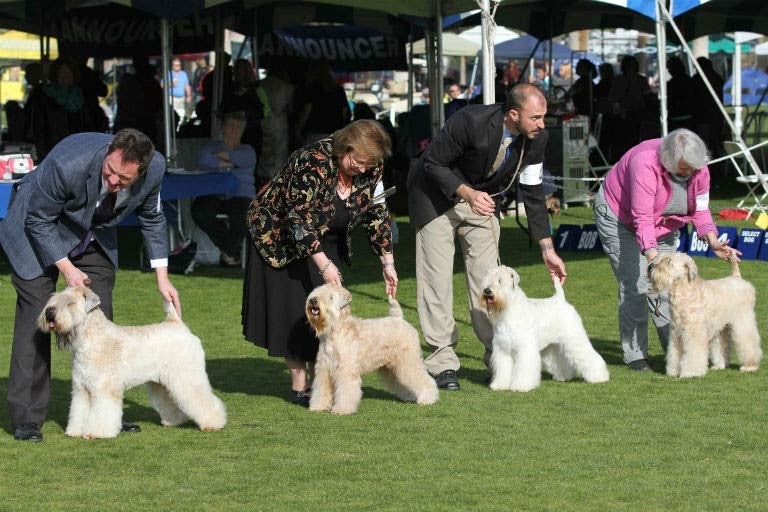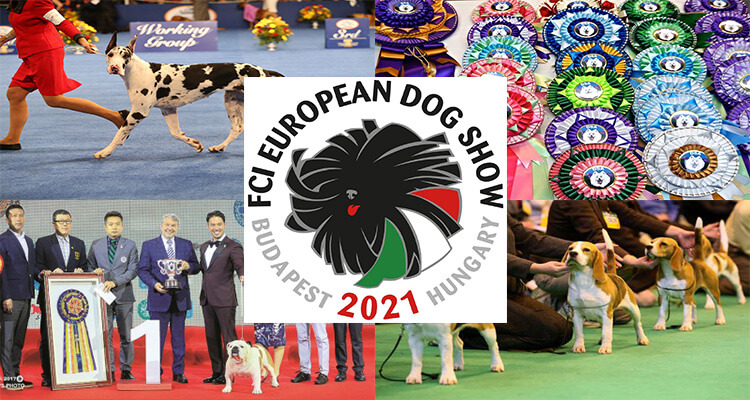Are you curious about the fascinating world of dog shows and the various classes that showcase different breeds and talents? In our blog, “Unleashing the Excitement: Dog Show Classes Explained,” we dive into the intricate details of these classes to provide you with a comprehensive understanding of what goes on behind the scenes. From breed-specific classes to agility and obedience competitions, each category offers a unique insight into the skills and qualities that make each dog stand out in the ring. Whether you’re a seasoned enthusiast or a newcomer to the world of dog shows, this blog will unravel the mysteries of dog show classes and help you appreciate the beauty and diversity of our canine companions.
Introduction: Understanding the Fascination with Dog Shows
Dog shows have been a popular and beloved pastime for dog enthusiasts for decades. These events showcase the best of various breeds, highlighting the unique characteristics and skills of each dog. The allure of dog shows lies in the opportunity to witness well-trained dogs competing in various classes to demonstrate their abilities and conform to breed standards.
The Competitive Spirit
Competing in dog shows taps into the competitive spirit of both the owners and the dogs. The dedication and training that go into preparing for these events are commendable, with participants striving for excellence in each class they enter.
It’s fascinating to see the bond between handlers and their dogs as they work together to present the best possible image of the breed.
The Judging Process
The judging process in dog shows is rigorous and thorough. Judges evaluate each dog based on breed standards, looking for qualities that define the essence of the breed. This meticulous assessment ensures that only the most exemplary dogs are recognized and awarded in their respective classes.
Owners and spectators eagerly anticipate the results, adding an element of suspense and excitement to the entire event.

Overview of Dog Show Classes: Different Categories and Criteria
When delving into the dog show classes explained, it’s essential to understand the diverse categories and criteria that make these events so captivating for both participants and spectators. Dog shows typically feature various classes that assess different aspects of a dog’s conformation, abilities, and behavior to determine the best representatives of specific breeds.
Conformation Classes
Conformation classes focus on evaluating a dog’s physical structure in comparison to the breed standard. Judges assess aspects such as size, proportion, coat, and gait to select the dog that best embodies the ideal characteristics of its breed. This segment often draws significant attention due to the beauty and elegance of the participating dogs.
Performance Classes
Performance classes showcase a dog’s skills and abilities in various activities such as agility, obedience, rally, and tracking. These classes emphasize the bond between the handler and the dog, as well as the animal’s intelligence, agility, and trainability. Participants in performance classes often thrill the audience with their speed, precision, and teamwork.
- Agility: Tests a dog’s speed and ability to navigate obstacles on a course.
- Obedience: Evaluates a dog’s training and response to commands in controlled settings.
- Rally: Combines elements of obedience and agility in a fast-paced, interactive format.
Popular Breeds in Dog Shows: Spotlight on Breed-Specific Standards
When it comes to dog show classes explained, understanding the popular breeds showcased is essential. Each breed follows specific standards set by breed clubs and organizations to maintain uniformity and showcase the best qualities of the breed.
Breed-Specific Standards
Each breed in dog shows is judged based on a set of breed-specific standards that outline the ideal characteristics, structure, coat, color, and temperament for that particular breed. These standards are meticulously defined by official breed standards provided by kennel clubs like the AKC or the UKC.
Meeting these standards ensures that the dog possesses the desired traits and qualities that make it a prime example of its breed. Judges carefully evaluate each dog in comparison to these standards to determine the winner.
Most Popular Dog Breeds in Dog Shows
Some of the most popular dog breeds showcased in dog shows include Golden Retrievers, Labrador Retrievers, German Shepherds, Bulldogs, and Poodles. These breeds often excel in agility, conformation, obedience, and other performance events.
- Golden Retrievers: Known for their friendly nature and intelligence.
- Labrador Retrievers: Agile, versatile, and highly trainable.
- German Shepherds: Loyal, confident, and highly obedient.
- Bulldogs: Well-known for their distinctive appearance and gentle temperament.
- Poodles: Highly intelligent and skilled in various dog sports.
The Role of Handlers: Importance and Techniques
Dog show classes explained often highlight the crucial role handlers play in presenting the dogs to their best advantage. A skilled handler can significantly impact a dog’s performance and overall presentation during a show.
The Importance of Handlers
Handlers are responsible for showcasing a dog’s conformation or obedience skills effectively. They must build a strong bond with the dogs to bring out their best qualities.
Handlers also need to have excellent communication skills to understand the dog’s cues and respond accordingly during competitions.
Handling Techniques
Handlers employ various techniques to ensure that the dog looks its best in the ring. This includes proper grooming, training, and conditioning to enhance the dog’s appearance and performance.
- Using positive reinforcement to motivate and guide the dog during the show.
- Practicing ring procedures to familiarize the dog with the show environment.
Preparing for the Show: Tips for Success
Participating in dog show classes can be an exciting yet nerve-wracking experience for both dogs and their owners. To ensure success, proper preparation is key.
Start Training Early
Begin training your dog for the specific show class well in advance. Focus on obedience, grooming, and any special skills required for the class.
Consistent practice and positive reinforcement can help your dog feel more confident in the show ring.Using treats as rewards can further motivate them.
Understand Show Requirements
Each dog show class has its own set of standards and requirements. Make sure to thoroughly understand what the judges will be looking for in your dog.
- Review the breed standard to ensure your dog meets the necessary criteria.
- Practice the required movements or poses for the class.
- Double-check all grooming requirements and make sure your dog looks their best.
“>
Scoring and Judging Criteria: What to Expect on Show Day
When participating in dog show classes explained, it is essential to understand the scoring and judging criteria that will be used on the show day. Judges evaluate various aspects of each dog, including conformation, agility, obedience, and more.
Conformation
Judges assess the overall appearance of the dog based on breed standards. This includes evaluating the dog’s structure, coat, movement, and temperament. Attention to detail is crucial in conformation classes.
Agility
Agility classes test the dog’s speed, coordination, and agility through obstacle courses. Dogs are judged on their ability to navigate the course quickly and accurately. Agility requires both physical prowess and mental sharpness.
Challenges and Rewards: The Realities of Competing in Dog Shows
Competing in dog shows can be both thrilling and demanding for participants. The journey to success in dog show classes requires dedication, patience, and hard work.
Challenges Faced in Dog Shows
Training Struggles: Some dogs may have difficulty with specific training exercises, requiring extra effort and time.
Competition Stiffness: Rivalry amongst participants can create intense competition, making it challenging to stand out.
- Veterinary requirements
- Time constraints
- Handling unpredictable behaviors
Rewards of Participating in Dog Shows
Success Stories: Witnessing your dog excel in various categories can be a source of immense pride and joy.
Building Bonds: Participating in dog shows fosters a unique bond between the dog and its owner, based on trust and teamwork.
Training and Conditioning: Getting Your Dog Show-Ready
Preparing your canine companion for dog show classes involves a combination of training and conditioning to ensure they are in top form to showcase their abilities. Here are some key steps to get your dog show-ready:
Regular Exercise Routine
Establish a consistent exercise regimen to keep your dog fit and energetic. This should include a mix of cardio, strength training, and agility exercises to enhance their overall performance.
Ensure your dog is getting enough physical activity to maintain muscle tone and endurance for the show.
Proper Grooming and Health Care
Regular grooming sessions are essential to maintain your dog’s coat, nails, and overall appearance. Additionally, prioritize your dog’s health by scheduling routine vet check-ups and vaccinations.
- Brushing your dog’s coat
- Trimming nails
- Ear cleaning and dental care
Frequently Asked Questions
-
- What are dog show classes?
- Dog show classes are categories in which dogs are grouped based on factors such as breed, age, size, and skill level for competition in dog shows.
-
- How are dog show classes organized?
- Dog show classes are typically organized by breed, with each breed having its own class or classes based on factors like age or skill level.
-
- What types of dog show classes are there?
- There are various types of dog show classes, including conformation classes, obedience classes, agility classes, rally classes, and more.
-
- What happens in conformation classes?
- Conformation classes focus on the physical appearance and structure of the dog, with judges evaluating how closely each dog conforms to the breed standards.
-
- How do obedience classes work in dog shows?
- Obedience classes test a dog’s ability to follow commands and perform specific tasks, such as heeling, staying, and coming when called, showcasing the dog’s training and discipline.
Unlocking the World of Dog Show Classes
In conclusion, understanding the diverse array of dog show classes is the key to fully appreciating the artistry and skill that goes into these competitions. From agility to obedience, each class showcases the unique talents and abilities of our canine companions.
By exploring the intricacies of different classes like conformation, rally, or flyball, enthusiasts can develop a deeper connection with their furry friends and participate in an enriching hobby that promotes bonding and teamwork.
So, next time you attend a dog show or consider entering your own pup, remember the insights gained from this guide on dog show classes explained. Embrace the excitement, showcase your dog’s talents, and savor every moment of this extraordinary experience!



